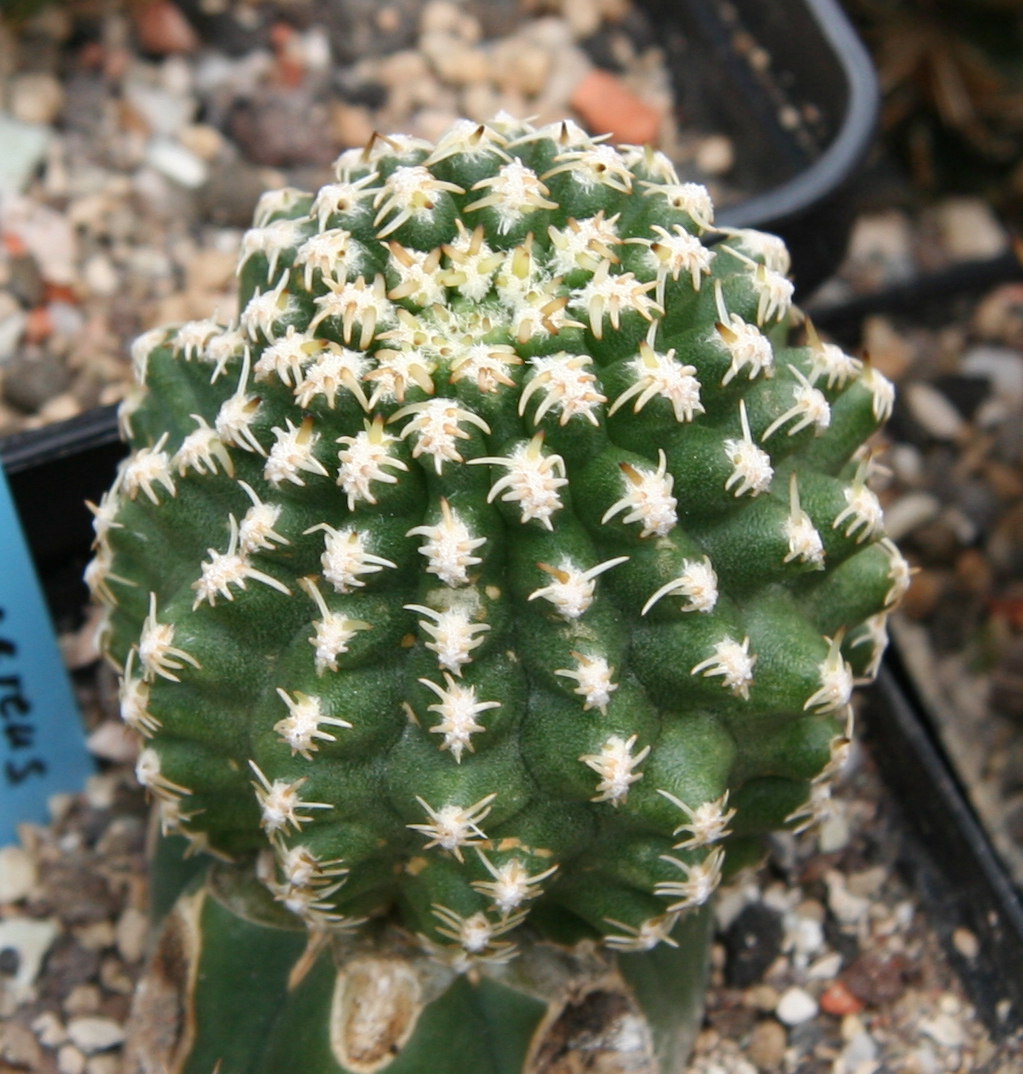|
Pygmaeocereus Bylesianus
''Pygmaeocereus bylesianus'' is a critically endangered species of Pygmaeocereus from Peru. Description The first description was in 1957 by Wilhelm Andreae and Curt Backeberg. The epithet of the species is named after the British cactus collector Ronald S. Byles.Wilhelm Andreae and Curt Backeberg (1957) ''National Cactus and Succulent Journal''. Volume 12, pages. 86–87. ''Pygmaeocereus bylesianus'' has spherical to short cylindrical dark green shoots up to 8 cm long and 2 cm in diameter. The shoots branch from the base and form small pads. There is a fleshy tap root. The 12 to 14 ribs are initially notched and later divided into clear cusps. The 10 to 15 radiating dark thorns turn gray with age. They are 3 to 7 millimeters long and usually not distinguishable into central and radial spines. Occasionally 1 to 2 cm long central spines are formed. The broad, funnel-shaped, scented, white flowers are around 15 cm long. They have a very slim and long flower tube. They only last 2 ... [...More Info...] [...Related Items...] OR: [Wikipedia] [Google] [Baidu] |
Species
In biology, a species is the basic unit of classification and a taxonomic rank of an organism, as well as a unit of biodiversity. A species is often defined as the largest group of organisms in which any two individuals of the appropriate sexes or mating types can produce fertile offspring, typically by sexual reproduction. Other ways of defining species include their karyotype, DNA sequence, morphology, behaviour or ecological niche. In addition, paleontologists use the concept of the chronospecies since fossil reproduction cannot be examined. The most recent rigorous estimate for the total number of species of eukaryotes is between 8 and 8.7 million. However, only about 14% of these had been described by 2011. All species (except viruses) are given a two-part name, a "binomial". The first part of a binomial is the genus to which the species belongs. The second part is called the specific name or the specific epithet (in botanical nomenclature, also sometimes i ... [...More Info...] [...Related Items...] OR: [Wikipedia] [Google] [Baidu] |
Pygmaeocereus
''Pygmaeocereus'' is a genus of diminutive cactus, cacti (family (biology), family Cactaceae). It is native to South America. These species generally do not reach more than high, and produce a large tuberous root system and scented night flowers. Species References {{Taxonbar, from=Q146638 Pygmaeocereus, Trichocereeae Cacti of South America Cactoideae genera ... [...More Info...] [...Related Items...] OR: [Wikipedia] [Google] [Baidu] |
Department Of Arequipa
Arequipa ( ay, Ariqipa; qu, Ariqipa) is a department and region in southwestern Peru. It is the sixth largest department in Peru, after Puno, Cuzco, Madre de Dios, Ucayali, and Loreto, its sixth most populous department, and its eleventh least densely populated department. It is bordered by the departments of Ica, Ayacucho, Apurímac and Cusco in the north, the Department of Puno in the east, the Department of Moquegua in the south, and the Pacific Ocean in the west. Its capital, also called Arequipa, is Peru's second-largest city. Geography This department has a rough topography, which is characterised by heavy layers of volcanic lava covering large areas of its inter-Andean sector. It has deep canyons such as the ones formed by the Ocoña and Majes rivers. Plateaus range in height from medium, such as La Joya, and high-altitude ones such the Arrieros Pampa and those located in the zones of Chivay, Huambo and Pichucolla. Volcanic cones, such as Misti, Chachani, Ampato, Mi ... [...More Info...] [...Related Items...] OR: [Wikipedia] [Google] [Baidu] |
IUCN
The International Union for Conservation of Nature (IUCN; officially International Union for Conservation of Nature and Natural Resources) is an international organization working in the field of nature conservation and sustainable use of natural resources. It is involved in data gathering and analysis, research, field projects, advocacy, and education. IUCN's mission is to "influence, encourage and assist societies throughout the world to conserve nature and to ensure that any use of natural resources is equitable and ecologically sustainable". Over the past decades, IUCN has widened its focus beyond conservation ecology and now incorporates issues related to sustainable development in its projects. IUCN does not itself aim to mobilize the public in support of nature conservation. It tries to influence the actions of governments, business and other stakeholders by providing information and advice and through building partnerships. The organization is best known to the wider ... [...More Info...] [...Related Items...] OR: [Wikipedia] [Google] [Baidu] |


